Last week a friend of mine texted me. He asked me about back pain. Said his friend was having lower back pain that crept into the hamstrings. Also said his nutsack felt weird. As with any injury, the logical thing to do = see a doctor to make sure you don’t have cancer or meningitis or [...]
Last week a friend of mine texted me. He asked me about back pain. Said his friend was having lower back pain that crept into the hamstrings. Also said his nutsack felt weird.
As with any injury, the logical thing to do = see a doctor to make sure you don’t have cancer or meningitis or AIDS.
I’m not qualified to diagnose anyone with much of anything, aside from stupidity…something I diagnose myself with on the reg.
But referring someone to a doctor and leaving it at that is a cheap way out. I’d like to think I know a few things about actual injuries than most some a few doctors…because I’ve recovered and experienced so many. (Probably more than the docs themselves.)
In the past six months, I’ve had…
- A broken finger
- A dislocated finger
- A separated shoulder
I shouldn’t necessarily be proud of how broken I’ve been, but, whatever…
So aside from seeing a doctor (which is always a good idea to make sure your body isn’t going to combust right now tomorrow), here’s what I said…
I don’t know about the nutsack pain. But if you have pain connected from the lower back into the hamstring, I’d guess it’s something neural. Sounds like a sciatica kind of thing.
And I feared his reply because I knew what it was going to be.
So what should he do?
Another crisis of ethics. I’m really not in the business of telling random people what to do. But I can tell others what I’d do if I were in the same situation. Because said neural issue could stem from many many many many many many different things.
And now that I’ve cleared enough of the legal and ethical hurdles in my head, let’s get onto the meat and potatoes.
For a little context, this guy is in the car a lot.
A LOT.
Already the wheels are churning.
Because a personal philosophy = a lot of back pain stems from a lack of mobility throughout the spine. As Frank Forenrich explains in Exuberant Animal:
Unfortunately, many back pain sufferers take a strictly structural approach to the problem. We feel pain and jump to the conclusion that a disc or ligament has a structural flaw of some sort — a bulge, a tear or a herniation. So we ask the doctor for a series of diagnistic images (X-rays, MRI, etc.) to give us a closer look at the offending tissue.
But in a sedentary population, back pain is unlikely to stem from any structural injury. After all, most Americans are scarcely using their bodies in the first place. Instead, common back pain is more likely to stem from poor use of the spine and reduced sensitivity to position and motion. Your physician wouldn’t be so coarse as to put it this way, but here is what he’d like to say: ‘The reason your back hurts is because you never use it. Because you don’t use it, your spine has grown dull and insensitive. You have a stupid spine and a stupid torso. It’s time to wise up and get moving.’
We can’t forget that the spine is essentially a series of joints strung together consisting of twenty six bones. That’s like nine fingers put together.
One of the quickest ways to kill a joint, let alone a series of successive joints in a chain = restrict movement about a joint.
From a daily environment standpoint, we’re living through a time when we rarely move our spine. We wear shoes, which effects on spine. We sit a lot, which effects our spine.
TL;DR = our lives, for the most part, aren’t helping our spine.
From a traditional fitness (McFitness) standpoint, we’re living through the neural spine Nazi regime.
We protect our spine as if get taken through any sort of range of motion another World War would start.
I don’t have anything against keeping a neutral spine. It’s useful for lots of things, like optimal transfer of force for barbell and freeweight exercise. But you need to have a more capable spine if you want to be a decent moving and decent feeling human being.
TL;DR = McFitness isn’t helping our spine.
But I’m veering off the path…
Warp tunnel = what I’d do for back pain with someone that sits a lot would be twofold.
First, I’d get the spine moving different ways.
Second, I’d do my best to undo the time spent sitting down.
The specifics, you ask?
OK.
But I’m now effectively ignoring the dude at the start of this, and I’m turning this into: if I had back pain of any sorts, here are some easy things you can start doing tomorrow to take matters into your own hands. Because, uhh, you DO own your body.
So maybe leaving your body 100% in the hands of others, you should start to take control.
ANYWAYS…
#1 – Undo butt in seat time with these…
Imagine if you threw a cast around your elbow or knee for ten hours every day. What would happen? What would you feel when you removed the cast? Sitting is essentially a cast for the spine and the musculature around the spine.
Structural adaptations start to take place as the days of this casting go on and on if they aren’t “undone.”
They usually aren’t undone. We sit in the car on the way to work. We sit at work. We sit even after we’ve sat for hours.
Ever been in the car for eight hours and want nothing more than to stand…only to want nothing more than to sit once you’ve stood for, oh, I don’t know, five seconds?
The first line of defense = fight against the sitting position as often as possible when you aren’t sitting. How? Hammer the opposite position.
1a. The couch stretch
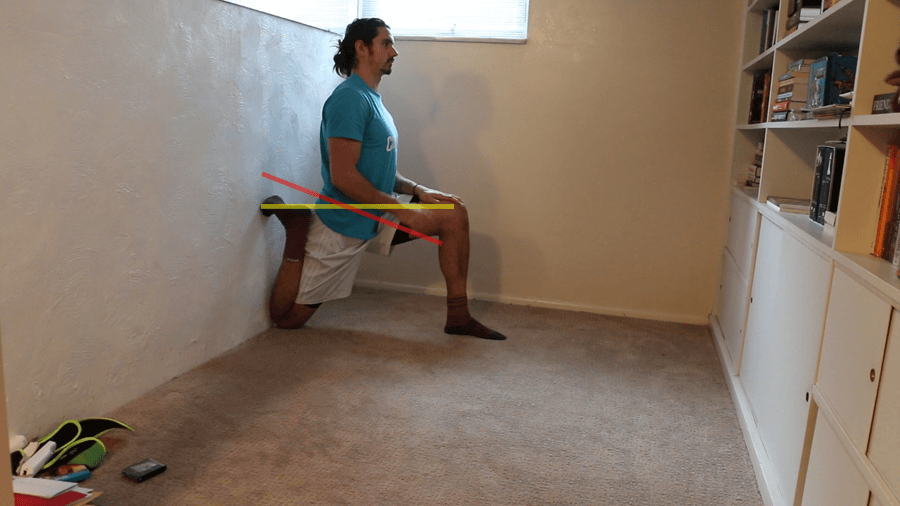
Get something soft for underneath your knee if you’re on a hard surface. Put your knee on the ground close to a wall, then slap your foot up on the wall above your knee. Set the front foot out as if you’re in a lunge position. Your goal is threefold: (1) have the knee touch the wall, (2) have your butt touch your heel, (3) have your butt of the rear leg squeezed.
You want to AVOID a huge back arch in order to properly stretch the hips. And you want to AVOID improperly aligning your knee, hip, and shoulder because you’re avoiding the reality of the situation: your quadriceps feel like they are going to tear from the bone.
So let’s tackle these one at a time…
Avoid a back arch by thinking about your hip structure like a bowl. The front of the bowl = the front of your hips = your pelvic. The back of the bowl = the back of your hips = your sacrum. You want to tip the bowl so water flows out backwards. One of the simplest ways to make sure you’re kinda sorta doing this = squeeze your butt.
Ideally, you want your hips to be level. Look at the picture above. My hips aren’t level because I’ve been ignoring this stretch for decades = this is the red line. The yellow line = hips more level.
Avoid improper alignment (that makes the stretch easier) by rotating towards the lunge leg. When your left leg is lunging forward, take your right shoulder and rotate it across the leg. Do the opposite for the, uhh, opposite leg.
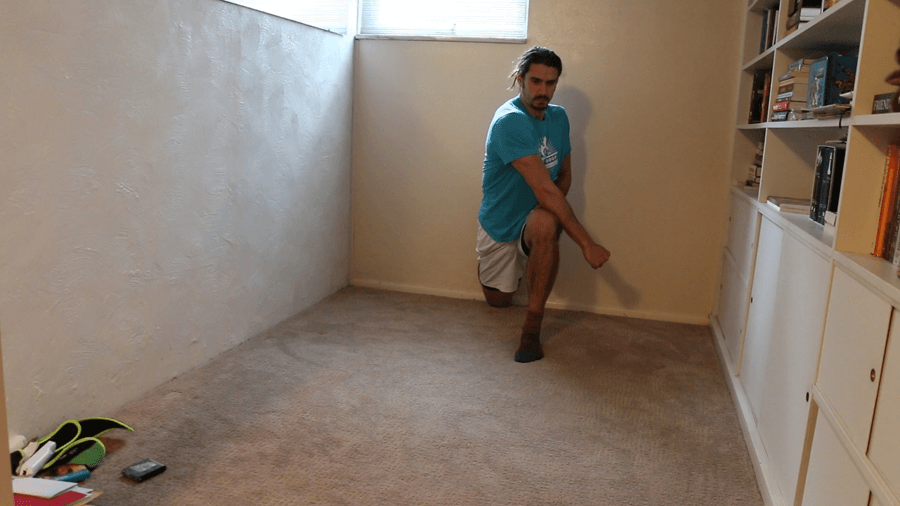
Back to my criteria…
If you haven’t done this before, you won’t even get close before you start tearing up. It’s going to hurt. Don’t necessarily push yourself and tear your rectus femoris, but don’t expect this stretch to feel green eggs and ham.
Once you’ve stopped wiping the tears from your eyes, you can add a back arch. BUT MAKE SURE YOU KEEP YOUR REAR LEG BUTT SEQUEEZED. This position = the opposite of sitting.
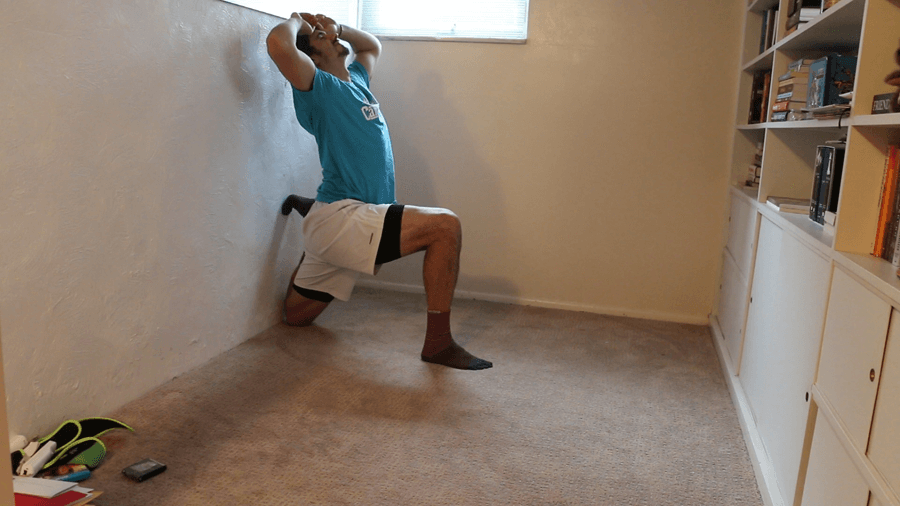
How long do you hold the position?
Until you pass out.
Maybe.
No.
Don’t pass out. Don’t sue me. Hold it for as long and often as you can. I recommend humans (yes, humans) hold this position for two minutes every day. I need to take my own advice sometimes. If you’re a human that sits a lot, you probably want to hold it more.
If you want a “lite” version, you can do it from a lunge positon. Same rules apply. Squeeze butt. Don’t arch back. Get foot to butt.
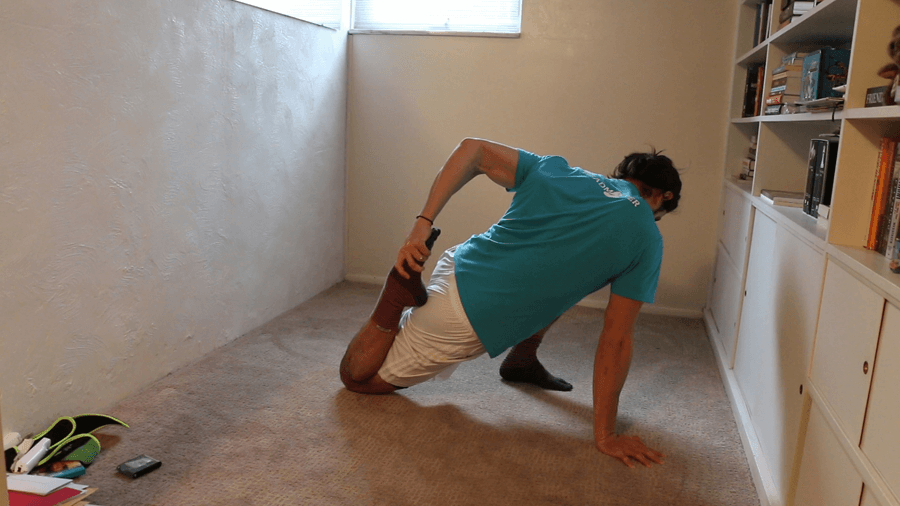
#2 – Elongate and decompress the spine
Humans are built backwards. Cats, bears, dogs, apes…all of them carry their weight across all fours. Their spine is horizontal, gravity is vertical. Our spine is vertical, gravity is vertical. Meaning our spine is almost always getting squashed. Sitting doesn’t help, so…
2a. Hang as often as possible
Grab something. Let your body relax. Hold for as long as you can.
You want to hang from something that allows your hips to relax (you can bend your knees), so it has to be high enough. But you can get creative. My house has an little stairwell nook that lets me hang. I’ve hung off first story hotel balconies (the ones you can reach from the ground floor…I’m not James Bond). I’ve hung from hotel stairwells. Monkey bars.
You can find lots of places to hang. You might even want to install a pull-up bar somewhere in your house that lets you hang. Every house should have a place for you to hang. It’s as humane as having somewhere for you to bathe.
2b. Squat as often as possible
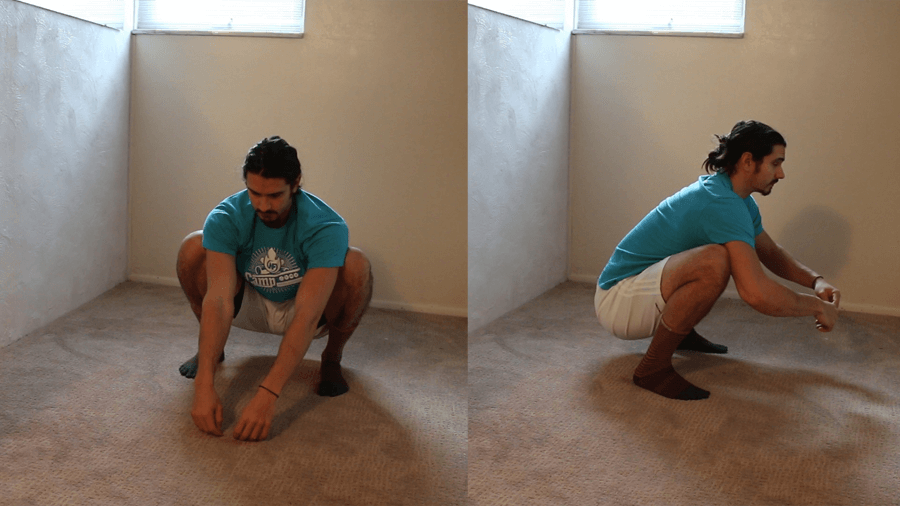
Squatting seems counter intuitive because it’s similar to the sitting position. But the sitting position is really just one stop on the way down to a rock bottom squat. Imagine if your arm was in a cast at 90 degrees. Now you get out of the cast. What’s the first thing you do? You flex and extend your arm to lubricate the extreme ranges of motion.
Working through the full range of motion smooths out the kinks.
The full squat smooths out the kinks of sitting.
I said lubricate.
Besides, your spine funnels into your hips. Having a good set of hips will go a long way in fixing and preventing back pain. The deep rock bottom squat hold is one way to build solid hips.
So let’s clarify…
I’m not talking about weighted squats. I’m not talking about doing squats for reps. I’m talking about just getting into a rock bottom squat and amassing as much time as possible down there.
I brush and floss my teeth in a squat every night.
You want to make sure you’re using decent technique. Weight over tripod, not on the toes. Don’t compensate through a collapsed foot or ankle. The full details of squatting are within Z2B, as is a progression for moving into the deep squat.
#3 – Snake
Let’s stick with the cast idea. The first thing you want to do when you’re free of a cast = move. (I think I’ve said this enough times.) The suggestions above move the spine here and there, but in minimal patterns. You want to start moving it in different planes.
Enter: the snake.
Ever seen a snake’s spine? Pretty crazy. And yet they slither as if they were liquid.
You can break this snaking into two actions.
Stand upright. Keep your hips static. Now bring one shoulder down to the same side of your hip. This is snaking from the shoulder.
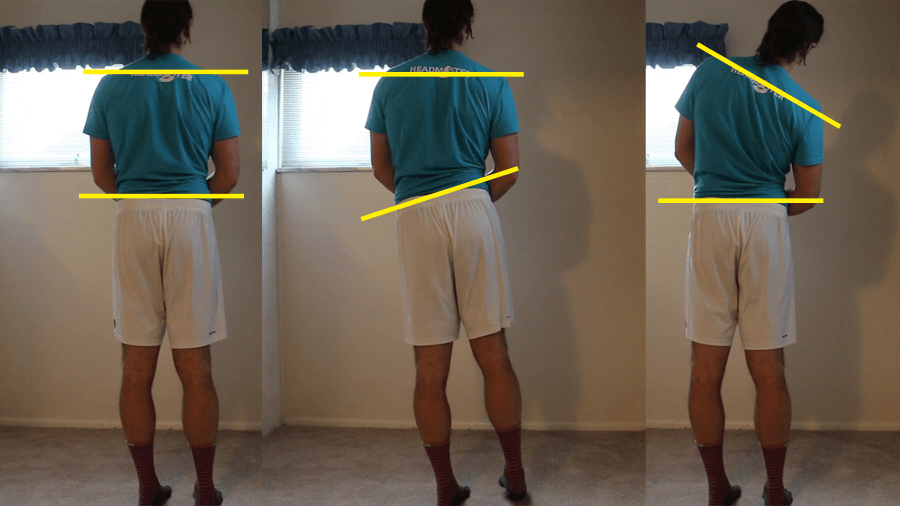
Stand upright. Keep your shoulders static. Now bring one hip up to the same side of your shoulder. This is snaking from the hip. It’s a little trickier to understand, but you’re basically sucking your hip up into the socket. It’s called pelvic listing. Here’s a video of Katy Bowman demonstrating pelvic listing.
Now here’s what we do.
Head on down to the ground and face the ground. Do a mild archbody hold by lifting your chest and legs off the floor. You can keep your arms grasped onto your boobies for good measure. Now “snake” your spine. Start with the left shoulder. Then right shoulder.
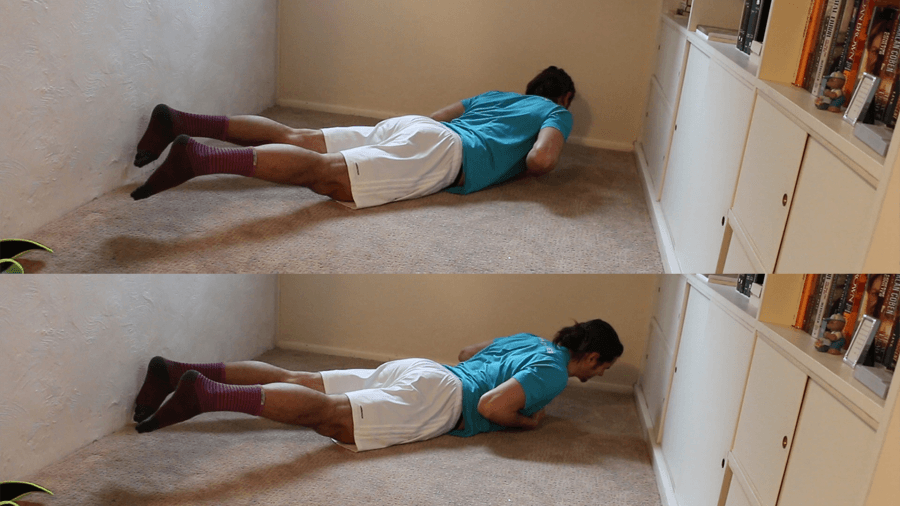
This shoulder variation is the easier variation to pick up on visually. The hip one is more subtle, which is shown below.
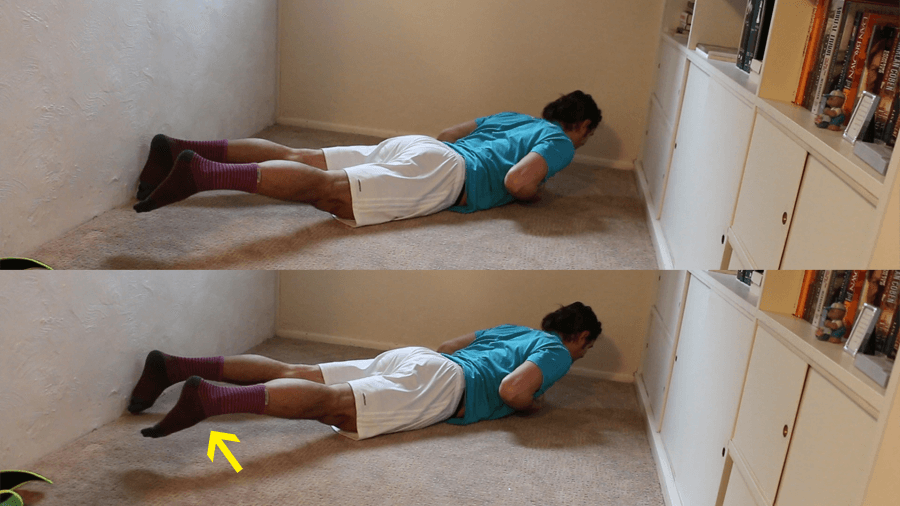
Keep the movements slow and deliberate for starters, doing double the number of repetitions for the hips than you do for the shoulders because the hips’ll need more.
So watz teh program dewd…?
Everyone wants to know about programs. My program for stuff like this = the meow method, which is something I talk about in Z2B. Think of a cat. The cat sleeps for a while. Gets up. Stretches. Goes about it’s day.
Use the meow method. Do these things as often as as much as you can. In the car? Maybe if you’re the passenger, you can do some pelvic listing. When you get out of the car, you can hold the squat. When you pass something you can hang on, you can hang.
For starters…
- Hold the couch stretch for two minutes daily per leg.
- Hold the squat for one minute daily.
- Hang for one minute daily.
- Do twenty reps of snakes daily.
And you can even use these as qualifiers as sorts. If your couch stretch sucks, then you should expect to have back pain. If you don’t hang often, then you should expect to have back pain. If you can’t reach the bottom of a squat correctly (heels stay glued to floor), then you should expect to have back pain. If you don’t move you spine like a snake often, then you should expect to have back pain.
And a last tip for people deadlifting and squatting: if you have massive back pain centralized primarily in the back to the point of it being absolutely awful when bending over (rounding the spine) and picking even a pencil up off the ground, I’d look into resetting the SI joint.
But maybe I’ll talk about SI joint junk another time.
(Like how every time I try to do hip thrusts, I get SI joint problems.)
OR maybe I’ll beef this up more and make this more of a…
If you have back pain and can’t do x, y, and z, then you know why you have back pain.
We’ll see.
I’m out.
And love.
♡ to Ido Portal. He’s the one that got me to hang and squat more. My body feels better because of it.
♡ to Dan John. He’s the one that gave me the bowl visual for the couch stretch.